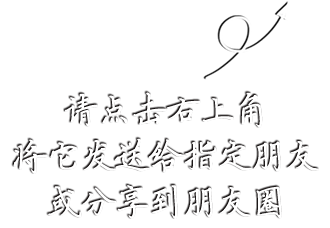

Liu Xinlu, vice-president of Beijing Foreign Studies University and a senior expert in Arabic studies.

Moroccan cyclist Karim Mosta completed a seven-month journey from Casablanca to Beijing last year, retracing the epic path of 14th-century explorer Ibn Battuta.
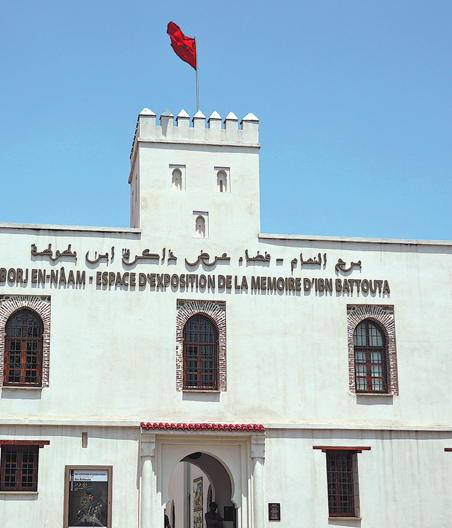
The Ibn Battuta Museum in Tangier, Morocco, houses a treasure trove of artifacts, manuscripts and interactive exhibits that bring to life the incredible stories of his travels.
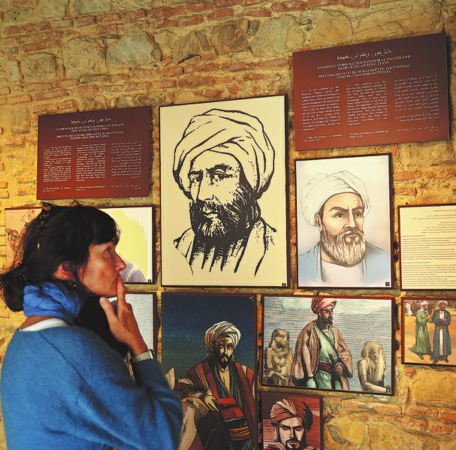
A tourist learns of the explorer.
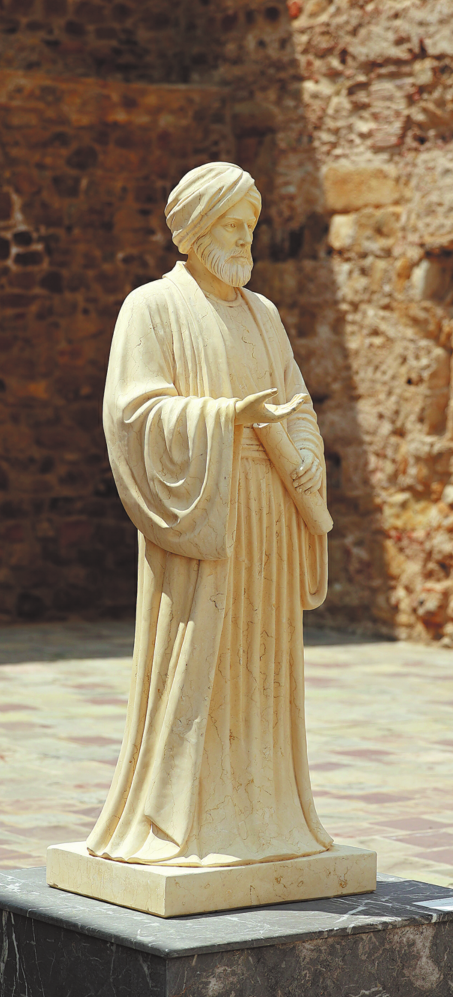
A statue of Battuta at the museum.
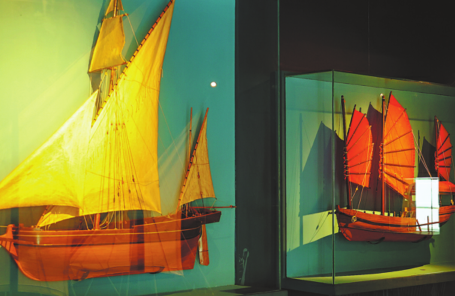
Sailboat models on display at the museum.
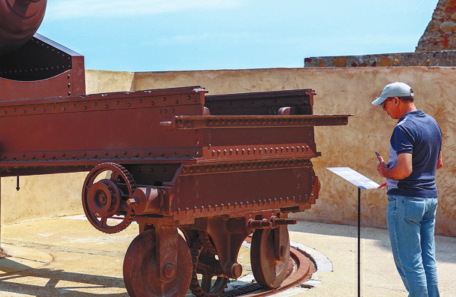
A visitor is intrigued by the exhibits at the Ibn Battuta Museum.
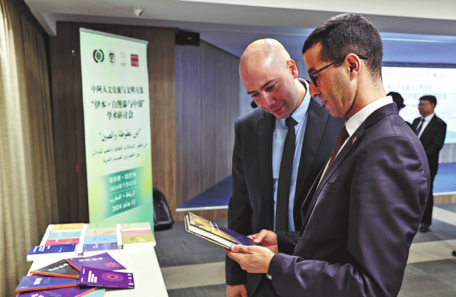
Academic seminar — Ibn Battuta and China — was held in July at the China Culture Center in Rabat, the capital of Morocco.
When Moroccan adventurer Karim Mosta pedaled away from Casablanca, Morocco, on a February morning in 2024, he had one goal in mind: retracing the epic path of 14th-century explorer Ibn Battuta.
The 70-year-old set off on his bicycle and embarked on a 204-day-long journey that spanned 15 countries, immersing himself in the unforgiving landscapes and centuries of cultural memories in pursuit of the spirit of his predecessor Battuta, whose curiosity bridged civilizations long before globalization had a name.
Battuta was one of the most prolific explorers of the Islamic Golden Age around the 7th-13th centuries, marked by flourishing scientific, cultural and economic development across the Muslim world.
Centuries ago, Battuta undertook a decades-long journey that was originally setting out as a pilgrim to Mecca. Yet, this spiritual quest evolved into an unprecedented exploration of the 14th-century world.
As a trained Islamic scholar, Battuta documented diverse civilizations with unique cultural insight, recording his observations in his famous travelogue, Rihla.
His account of China provides rare firsthand descriptions of Hangzhou then, which he called "the largest city on Earth", and of Guangzhou's multicultural markets, offering invaluable historical evidence of Silk Road exchanges.
"In his travel writings, he depicted a China of prosperous people and abundant goods, making me yearn for China and the Silk Road since childhood," says Mosta, who was born in Tangier, the birthplace of Battuta.
At 70, Mosta decided to follow in the footsteps of the legendary Moroccan explorer along the ancient Silk Road.
His personal odyssey, a seven-month bicycle expedition, traversed three continents, covering Spain, France, Turkiye and Kazakhstan.
"China, the final leg of my journey, tested my limits under the relentless summer sun. Sandstorms, scorching heat, headwinds and flat tires became my constant companions. Yet, amid these challenges, it was the kindness of strangers that left an indelible mark on my soul," recalls Mosta in a recent travelogue.
Now, Mosta is preparing a photo exhibition that documents his extraordinary 204-day bicycle journey, following Battuta's legacy, in Auxerre, France. It is scheduled to open on June 5.
Like Mosta, Ayoub Bechrouri decided to develop his career in China, partly under his childhood influence from Battuta.
Bechrouri who came to China seven years ago and has worked as a journalist with China Arab TV in Beijing for two years, says "Ibn Battuta isn't just a historical figure — he's a national symbol, an icon of Moroccan curiosity. His accounts have made many Moroccans hunger to discover new places and impacted every Moroccan."
Before coming to China, Bechrouri says he was fascinated by the country's ancient civilization, some of which came from a legacy left by Battuta.
"His documented travels connected cultures globally. He didn't just visit China but also Saudi Arabia, Iraq and many other countries repeatedly. Traveling to China then was incredibly difficult, usually limited to trade or pilgrimage via the Silk Road. But Ibn Battuta traveled out of pure curiosity; this was exceptional for that era," Bechrouri notes.
"I saw parallels between the richness of our cultures through his account. In Morocco, when we discuss China, we speak of grand things — positive things passed down through generations," he adds.
Bechrouri says he was particularly impressed, in his teenage years, by Battuta's travelogue's description of Guangzhou, the capital of South China's Guangdong province.
"He painted a vivid picture of the orderly markets and respectful citizens, and the unfamiliar drinks (likely tea) and cultural elements like clothing and dynastic rule, the city's cleanliness and wide streets," he recalls.
It incentivized him to visit the city a few years ago.
"His words echoed in my mind during my visit then. The similarities in hospitality and urban energy were striking," he says.
Just as Arab merchants thrived here centuries ago, Moroccan businesses now flourish under the Belt and Road Initiative, he observes.
"The movement of goods, ideas, and people continues — except now it's amplified by technology. I've met Chinese merchants in Guangzhou who speak Moroccan Arabic fluently," he says with excitement.
Bechrouri considers Battuta's journey a representation of a golden era cultural diplomacy.
"That's perhaps why many Arabs and Moroccans have initially gravitated to cities he mentioned, like Guangzhou and Quanzhou (Southeast China's Fujian province)," he says.
Liu Xinlu, vice-president of Beijing Foreign Studies University and a senior expert in Arabic studies, points out that while medieval interactions between civilizations were often transactional, centered on silk, spices and precious metals, Battuta's Rihla broke this mold by documenting the human and intellectual dimensions of cross-cultural encounters.
"His contributions to cultural exchange were revolutionary for the 14th century, offering a blueprint for mutual understanding that transcended commerce," Liu says.
For Liu, Rihla is more than just a historical narrative — it's a literary and cultural landmark that serves as a crucial source for understanding the interactions between Islamic and Chinese civilizations in the 13th and 14th centuries.
He says that the presence of the term Zayton — the very name used by Battuta to describe Quanzhou — thriving Muslim communities and interfaith coexistence made Battuta's accounts vividly real.
Tracing the development of the Battuta scholarship in China, Liu identifies three major milestones. The journey began in 1981 with Peking University professor Zhong Jikun's pioneering introduction of Battuta.
This was followed by Peking University professor Ma Jinpeng's partial Arabic-to-Chinese translation The Travels of Ibn Battuta in 1985. A significant leap came in 2008 with renowned Arabic translator Li Guangbin's complete and annotated translation of Rihla, which incorporated textual analysis and scholarly commentary.
Liu observes that recent research has expanded far beyond linguistic study.
Today's scholars explore Battuta's writings through multiple lenses, including Yuan Dynasty (1271-1368) maritime trade networks, religious pluralism in port cities, and comparative studies with other travel writers like Marco Polo, he says.
These approaches reflect the increasing sophistication and inter-disciplinarity of Chinese Arabic studies, he adds.
"This shift toward values-based interaction parallels the academic shift in Ibn Battuta studies," Liu explains.
"We've moved from textual translation to asking what his narrative tells us about trust, diplomacy, and non-extractive relations."
Looking ahead, Liu advocates for enhanced collaboration between institutions in China and the Arab world. He envisions joint exhibitions between Quanzhou and Casablanca museums to illuminate shared maritime histories.
He also calls for a renewed focus on the ethical dimensions of Battuta's travel narratives and how they can help inform present-day notions of cross-cultural trust and cooperation.
As Bechrouri interacts with more people during his reporting, he believes that Battuta's influence extends beyond Morocco. His Arabic-written accounts impacted the entire Arab world's perception of China.
"Today, through Belt and Road, we're witnessing a Silk Road revival — Moroccan businesses increasingly engage with China, not just for trade but also tourism and education. We're building modern bridges through media, showing China's heritage and development to Moroccan audiences," he says.
For Mosta, he still feels touched by a gas station worker who didn't hesitate to offer him a spacious room, hot water and food in the Gobi Desert during his trek through China, and how a hotel attendant in the Inner Mongolia autonomous region brought him fresh fruit and snacks after noticing his exhaustion.
"These acts of generosity, as refreshing as an oasis in the desert, became the heartbeat of my journey. The warmth and sincerity of the Chinese people reminded me that even in an age of modern marvels, the true spirit of the Silk Road endures," his travelogue reads.
He intends for the exhibition in France to inspire more to embark on journeys of exploration — retracing history, recording the present, and continually writing new chapters in the Silk Road's enduring story.
"I would also like to share my experiences in Quanzhou later this year," Mosta says, adding that he thinks it's important for one to visit China in person to understand it.
Contact the writer at yangfeiyue@chinadaily.com.cn

